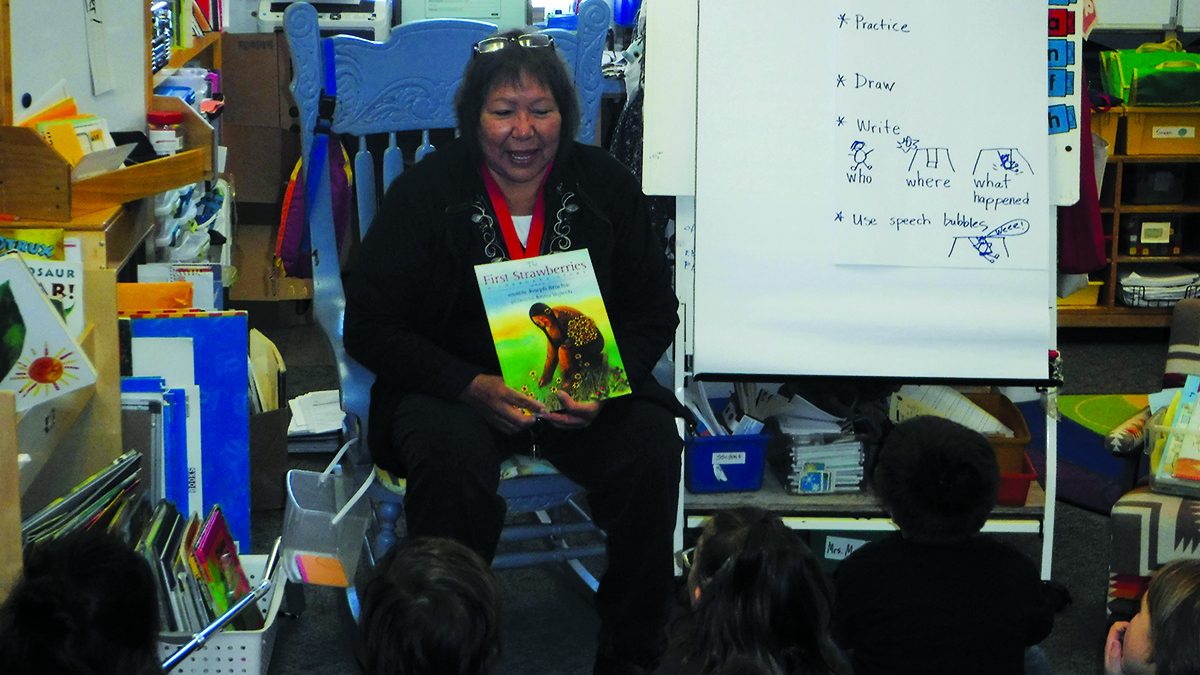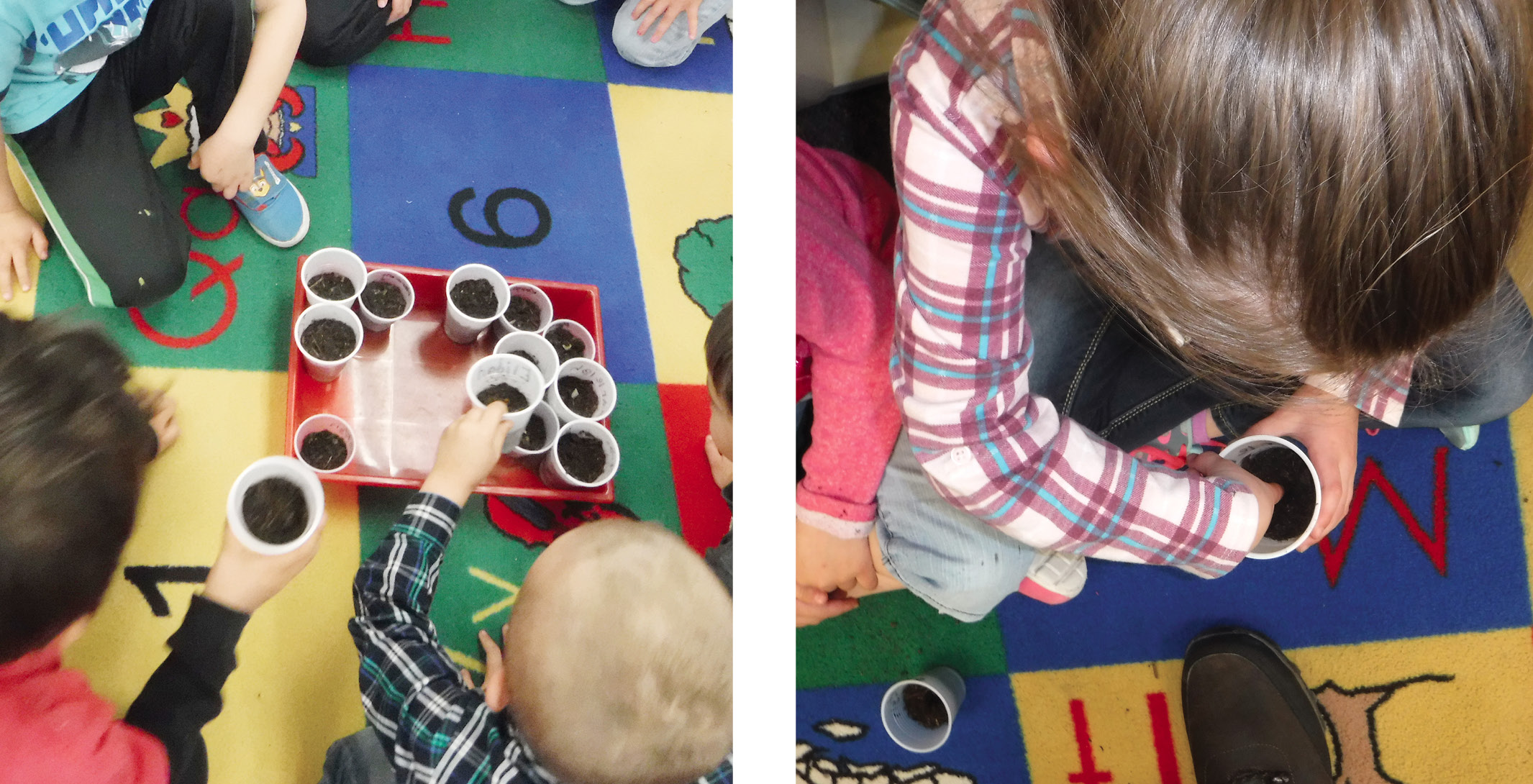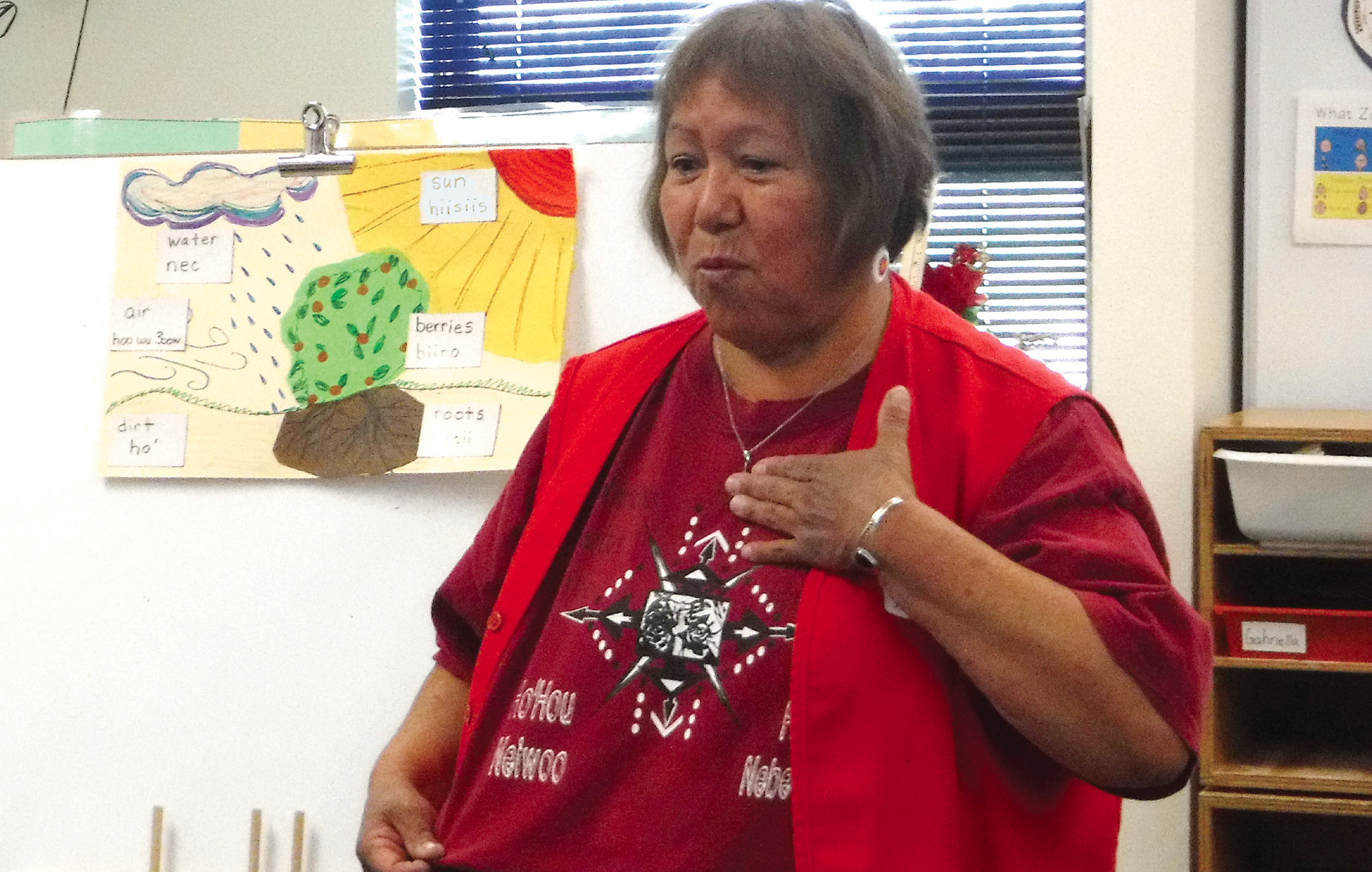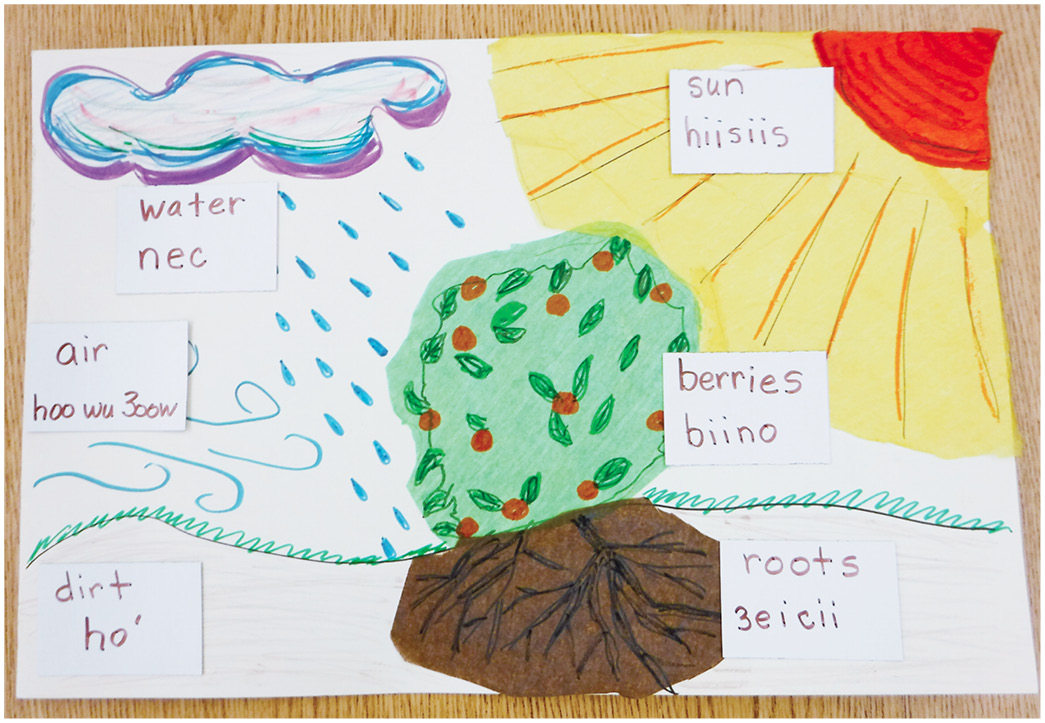feature
Inclusion of Native Culture During Science Instruction
Community resources come together to help teach science lessons
Science and Children—March/April 2021 (Volume 58, Issue 4)
By Karen Cloud, Cathleen Bates, and Iva Moss-Redman

Culturally relevant instruction has demonstrated positive student outcomes (Kana’iaupuni, Ledward, and Jensen 2010). Yet, Native American cultures and languages are among the least integrated cultures into instructional practices. The National Indian Education Study (NIEA) is conducted every four years to determine the degree Native American cultures and languages are part of the curriculum in grades 4 and 8. Current findings indicate that even in schools where more than 25% of students are Native American, only 26% of grade 4 students had teachers who implemented culturally specific instruction. Including culture enhances socio-emotional well-being, which in turn enhances math and reading scores (Kana’iaupuni, Ledward, and Jensen 2010).
The majority of Native American children attend public schools. They may be in your classes. Do you know who they are? What do you know about their culture and traditions? Did you know there are 567 federally recognized distinct Native American tribal cultures in the United States? Did you know that traditional Native American education was holistic, community-based, hands-on, and relevant to the needs of the tribe and child (Standing Bear 2006). Do your science lessons invite and involve community members? What are you doing to bridge Western science with Native ways of knowing?
A quick look at the Native American academic achievement gap illustrates Native American students are more likely to live in areas of poverty, less likely to graduate from high school, and less likely to go on to college (Annie E. Casey Foundation 2017; 2018). The Next Generation Science Standards and others recommend that teachers trained in culturally relevant instruction are key to improved academics (Aikenhead and Lima 2009; Ninneman, Deaton, and Francis-Begay 2017; Pewewardy 2002). Unfortunately, the majority of non-Native teachers do not teach their Native American students in a culturally relevant manner (Ninneman, Deaton, and Francis-Begay 2017).
There are simple strategies that allow seasoned as well as early career teachers to teach culturally relevant science to their Native American students. The strategies included in the following lesson vignette provide a starting point and are not comprehensive.
Culturally Relevant Lesson Vignette
One kindergarten teacher demonstrates how a few simple changes to a 5E science lesson builds bridges to science understanding for Native American kindergarteners. The lesson encourages students to use the Crosscutting Concept (CCC) of patterns to determine what plants need to survive. Prior to this lesson, students observed patterns (CCC) of living things during a nature walk and developed a KWL chart (What I know, want to know, and what I learned) that introduced the investigation.
Cultural strategies used in this lesson include showing respect for community and culture experts, language, Native stories, and learning styles. More complex issues of Native science, which require a higher level of training and deeper understanding, have been purposefully avoided. As you read, consider the culturally relevant strategies incorporated by the teacher.

Lessons about plants included planting seeds.

Students observe germinating seeds.
Lesson Objective: Use observations to describe patterns of what plants and animals need to survive.
Before starting this lesson, get students to see themselves and people within their culture as scientists. This introduction could be adapted to any science lesson. It is included with this lesson to illustrate its use and importance.
- Introduction: We Are All Scientists
- Materials
- Hand mirror
- Small posters of scientists from various cultures including Native American.
- Squanto’s Journey by Joseph Bruchac
- Native Story and Scientist Discussion (15 minutes)
Students are invited to listen with their heads down (to show respect) or to look at the book as the teacher reads a section from Squanto’s Journey (2000), written by Joseph Bruchac, a highly respected Native American author. The teacher focuses student engagement by providing a brief background on Squanto and then asks a question such as, “As I read a section from Squanto’s Journey, listen to how early Native Americans, like modern scientists, did investigations with plants.” Squanto’s Journey does not have numbered pages. Start reading on the page that begins with the phrase, “Use the small fish…” Continue reading for two pages. After reading aloud, follow up with a question such as, “How did early American Indians, like Squanto, work in a manner that is similar to modern scientists?”
After discussing the similarities, the teacher shows her students pictures of scientists from different cultural backgrounds including Native Americans. Following a discussion about who scientists are and what they do, the teacher picks up a hand mirror and invites each student to look into the mirror to “see” another scientist, him/herself! Students are excited to think of themselves as scientists. The teacher then asks a question such as: “Would you like to do an investigation with seeds and plants like a scientist?”
Investigation: What Do Plants Need to Survive?
Materials
- The First Strawberries by Joseph Bruchac
- Potting soil
- Seeds
- Small cups
- Hand lenses
- Goggles
Engage (10 minutes)
The next day, students gather on the reading carpet. The teacher shows students the KWL chart from the earlier lesson and asks, “From our nature walk, what patterns did you find that plants need to survive?” The kindergarteners chime in with comments such as dirt, sun, and water. The teacher then focuses student attention to the The First Strawberries written by Joseph Bruchac (1993). The teacher invites her students to, “Listen for one of those special words from our KWL chart.” Again, the teacher respectfully invites her students to listen with their heads down or look at the book as she reads the story. Following the reading, the teacher asks, “What special word from the KWL chart did you hear in the story?” Students call out “sun” and “sunlight.”
With their minds focused on the sunlight, the teacher points to a tray on which she has placed soil, seeds, cups, and a small container of water. She asks her students, “How can you use these items to investigate whether the sun or light really does help plants to grow?” and invites students to share their suggestions for a possible investigation. Help guide the discussion so that students will understand that some plantings need to be left out in the sun or under light, and others kept in the dark. Next, ask a question such as, “Where else can we set out our plants to investigate if they need the sun to grow?” Eventually, students will suggest that plants can be placed away from the sun or light but not in the dark.
Explore (15 minutes)
Provide students with safety goggles and remind them to wear the goggles as long as they are working with the soil. Next, distribute trays of planting materials (seeds, soil, cups, and water) to small groups of students. Once the seeds are planted, invite students to place their cups in one of three predetermined areas. In this classroom, the three areas are a terrarium, inside a cupboard, and on the top of the file cabinet away from the window. With the cups in place, students wash their hands with soap and water and return to the reading rug to discuss their investigation and predict what will happen to the seeds as they germinate and grow into plants.

Visits from Elders included story time and learning vocabulary.
Explain (15 minutes)
During the discussion, students make predictions. The teacher shows the students a blank prediction chart and asks, “Which location—the terrarium, inside the cupboard, or on top of the file cabinet — will plants grow the best?” Each student writes his/her name on a sticky note, which they paste on the chart. Next, as a class, students count the number of predictions in each category. Using the completed prediction chart, students graph class predictions.

Student language chart
Evaluate: Formative (10 minutes weekly)
In their plant journals, students draw their plant each week. They may also note patterns such as color changes, leaf color, or height. Although plant height is not measured or recorded, this could easily be incorporated into the investigation. Plant journals are assessed via teacher-student discussion during journal time. The teacher may choose to chart student understandings.
Elaborate (15 minutes)
The day after the seeds are planted, Northern Arapaho Elders (a grandmother and a parent), visit the class. Elders are keepers of the knowledge and are highly respected as teachers. During her reading of the First Strawberries, the grandmother pauses to teach students key Arapaho terms such as the word for Earth and soil (Biito’owu’), one of the most important terms that Arapaho children learn and always capitalized. The grandmother uses Native language and culture to help teach the science content. The parent serves as a culture and language resource for the teacher and students. The teacher supports the grandmother’s teaching, in part, by creating a poster to illustrate key terms from the reading.
Evaluate: Summative (35 minutes)
As a summative assessment and to illustrate what plants need to survive, students paint a watercolor during art class (20 minutes). Student watercolors illustrate evidence of light, water, soil, and a plant, with an emphasis on sunlight.
The next day, with watercolors and plants journals, students gather into small groups to communicate patterns observed among plants grown in the same environment and patterns of the same plant grown in different environments. While students talk, the teacher listens for the patterns students have discovered during their investigation. After approximately five minutes, the teacher brings the class together and invites students to share what patterns they observed and to consider whether their predictions were correct (10 minutes). The watercolors are assessed using a rubric during a teacher-student interview at another time during the week.

Students planted seeds and observed plant growth.
Strategies to Include Native American Culture
As demonstrated in the lesson vignette, the classroom teacher has a responsibility to consider instructional strategies that incorporate students’ cultural preconceptions. For Native American students, this means that non-Native teachers, especially, must show respect for their students. Non-Native teachers should go out of their way to find resources such as books, multimedia, and culture experts. They need to learn key Native language terms, become involved with the Native community, and attend to Native American learning styles. While each of these strategies are important, respect is foundational.
Respect
Respect is essential to the traditional Native ways of knowing (Aikenhead and Lima 2009). In the Arapaho language alone, there are over 50 words that signify respect. For example, the word boobooteetiinen means to act in a respectful way. To illustrate boobooteetiinen, in many Native cultures, eye contact is a challenge to war and a high form of disrespect. Yet western-trained teachers often use management cues such as “eyes on me.” Not only should teachers not ask or expect eye contact from Native American students, they also should not make eye contact with their Native students until they have earned the respect of those students.
In the lesson vignette, the teacher and students both show respect for the Native grandmother and parent by avoiding direct eye contact. The careful selection of traditional stories written by a respected Native author shows cultural respect. The flow of the lesson, student engagement, and instructional strategies allow access to knowledge and demonstrate respect. Respect is situated within each of the following strategies.
Respect for Community and Culture Experts
Respect for community includes learning about the culture, inviting Native experts into the classroom, and attending students’ cultural and athletic events. In this lesson, the obvious community involvement was inviting community members into the classroom. Less obvious is the trust that had to be built for members of the Native community to want to participate.
Culture experts and elders are authentic cultural role models for students. Consulting with experts helps teachers avoid causing offense, treading into sacred knowledge, or creating stumbling blocks for student learning. Non-Native teachers generally do not know what knowledge is considered sacred and what is appropriate to share in a classroom. Many Native culture experts and elders can explain key language terms and answer questions that support the science content.
Respect for Language
Respect for and inclusion of Native language is vital. Learn how to say thank you and hello in the Native language. Invite a language expert to translate the posters in your classroom. Learn and then teach key Native vocabulary words for the lesson. For example, the teacher invited the Native grandmother to teach key vocabulary to the students and made a Native language picture poster to aid student learning. Language is also supported by and found in Native stories and legends.
Respect for Native Stories and Legends
In traditional Native cultures, knowledge is passed down through the telling of stories. Authentic cultural stories provide a broader worldview for all students and have the capacity to connect science content knowledge to the lives of Native American students. Native-authored literature such as The First Strawberries is a powerful teaching tool and can enrich students’ understanding of science concepts (Lawrence 2007).
Native American students are inclined to be global or holistic learners starting with patterns (CCC) or the big picture in which they discover supporting details, facts, and new patterns (Pewewardy 2002). Most children learn best this way. Unfortunately, western elementary science lessons often begin with isolated facts or vocabulary. In this lesson vignette, the vocabulary is taught near the end, and student learning is supported with Native American culture, stories, and language. Strategies that incorporate traditional ways of knowing and learning enhance student understanding and build bridges into western science for Native American students (Pewewardy 2002).
Conclusion
In considering culturally relevant science instruction for Native American children, there is a continuum of effective instruction. First, Native science teachers are the best teachers for Native American students. Toward the middle are non-Native science teachers who have some cultural training. Least effective are non-Native science teachers with minimal or no cultural training (Aikenhead and Lima 2009). If you are in this last category, why wait? There are simple things you can do today in your science class that will make a difference with your Native American students. As demonstrated in this lesson vignette, inclusion of Native American culture does not need to be complicated. Stick with the simple changes. Include pictures of Native American scientists; learn, teach, and display Native language; invite elders into your classroom. And above all, act in a respectful way (boobooteetiinen) toward your students and their traditional ways of knowing.
If you do not have Native American students in your class, the strategies outlined here can be adapted to meet the needs of other cultures. Implementing the strategies will add an important cultural dimension to your science lessons. If you do have Native American students in your science class, then the strategies become critically important to build bridges to Western science knowledge. Recognizing and learning to teach Native American students is a lifelong endeavor filled with respect toward your students and their culture(s). ●
Resources
The Arapaho Language Project, University of Colorado, Boulder. Retrieved from: https://www.colorado.edu/csilw/alp/
Bruchac, J. 2000. Squanto’s journey: The story of the first Thanksgiving. San Diego: Silver Whistle.
Bruchac, J. 1993. The first strawberries: A Cherokee story. New York: Dial Books for Young Readers.
Stanford Medicine. 2018. Biomedical Association for the Interest of Minority students. Celebrating Native American Heritage Month: Honoring Diversity in Science. Retrieved from https://web.stanford.edu/group/bioaims/images/Native%20American%20Scientists.pdf
Karen Cloud (karen.cloud@mnstate.edu) is an assistant professor of elementary education at Minnesota State University in Moorhead, Minnesota. Cathleen Bates teaches kindergarten at Aspen Early Learning Center in Riverton Wyoming. Iva Moss-Redman (Northern Arapaho; ivam@uidaho.edu) is a PhD student at the University of Idaho.
Biology Equity Inclusion Multicultural Elementary


